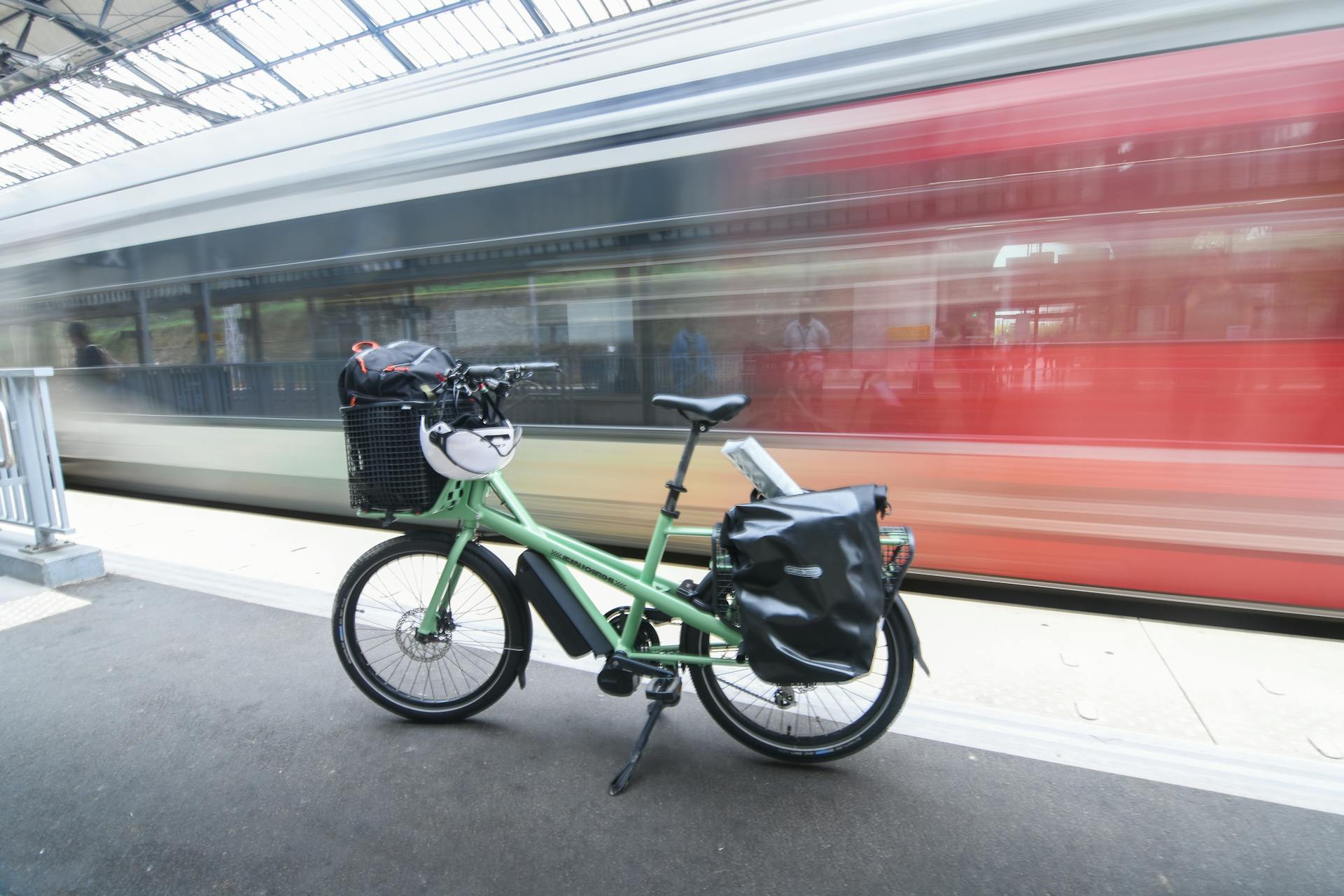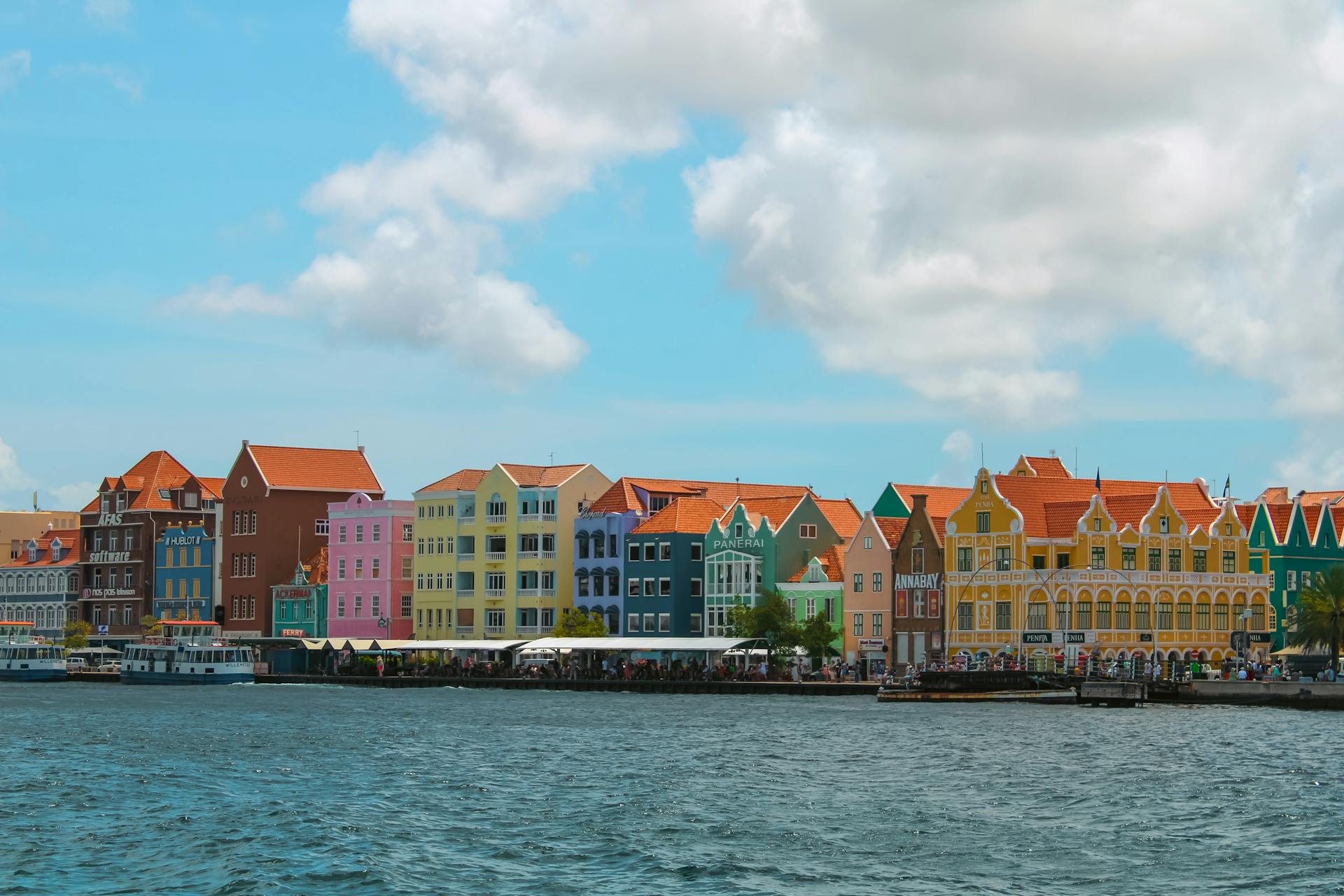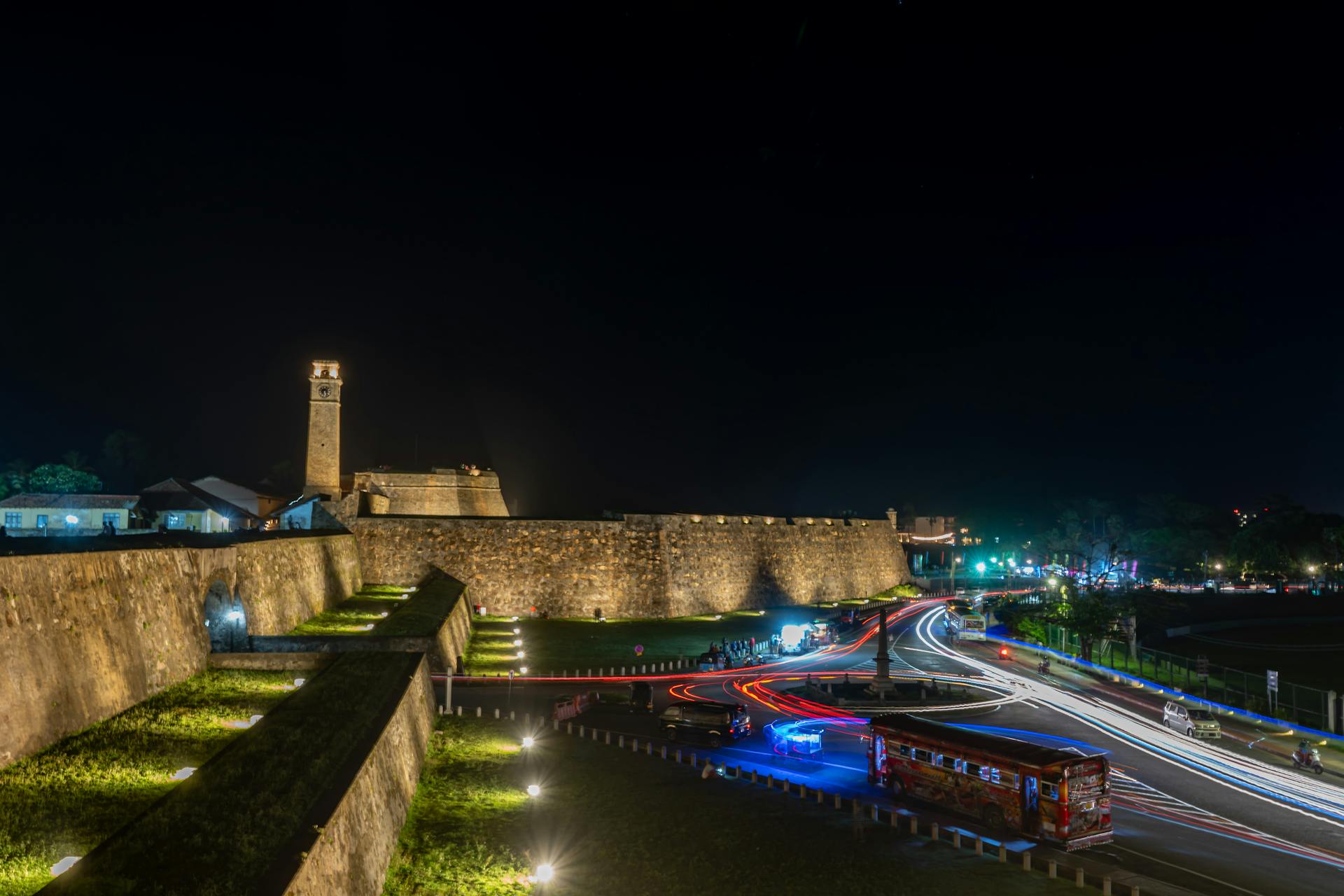
Galle Dutch Fort Sri Lanka is one of the most impressive and well-preserved fortifications in South Asia. Built by the Portuguese in 1588, it was later taken over by the Dutch in 1640 and expanded to its current form.
The fort's strategic location on the southwestern coast of Sri Lanka made it an ideal trading hub, with the Dutch controlling the lucrative spice trade. The fort's walls, which stretch for over a kilometer, are a testament to the Dutch engineering skills.
As you walk through the fort's narrow streets, you'll notice the unique blend of Dutch and Sri Lankan architecture, with colorful buildings and quaint shops. The fort's history is palpable, with remnants of the Dutch colonial era still visible today.
Sri Lanka Guide
Galle Fort, Sri Lanka is a must-visit destination. Located on the south coast, it's a UNESCO World Heritage Site and a living neighborhood where heritage coexists with modernity.
The fort has a rich history, evolving through centuries of influence from Europe, Asia, and the Middle East. Its architecture reflects this blend, with mosques, churches, and homes showcasing a mix of European and South Asian styles.
Galle Fort is not just a historical site, but a bustling hub for merchants and traders. Its cobblestone streets and fort walls require sturdy footwear, so be sure to wear comfortable shoes.
Arriving early is a good idea, as mornings are the best time to explore Galle Fort. The streets are quieter, temperatures are cooler, and you can capture beautiful photos without the crowds.
To make the most of your visit, consider taking a guided tour. Local guides can provide fascinating stories and historical details about the fort's colonial past that you might miss when exploring on your own.
Here are some essential items to bring along:
- Reusable water bottle
- Sunscreen
- Hat or cap
- Comfortable shoes
By supporting local businesses and buying souvenirs or dining locally, you'll be contributing to the community's livelihood and enriching your visit. This helps the locals maintain the area and welcome tourists enthusiastically.
Galle Fort's sunset is truly unmissable, so be sure to stay or come back for it. The tropical weather can be intense, so don't forget to stay hydrated and sun-safe.
Things to Do
Galle Dutch Fort is a treasure trove of history and culture, waiting to be explored. The fort's cobblestone streets are a delight to walk on, and the centuries-old colonial buildings are a must-see.
You can stroll down the fort's interior, wandering by the outer walls and taking in the stunning ocean views. The fort's architecture is a unique blend of Dutch colonial style with local influences, making it a fascinating sight to behold.
The Galle Fort Lighthouse is a popular spot to visit, offering breathtaking views of the surrounding area. You can also witness the beautiful sundown moments from the fort wall with locals, making for a truly entertaining experience.
Shopping down the streets and markets is a great way to experience the local culture, and trying the unique dishes at restaurants is a must-do. For some relaxation, take a seat at the fort cricket stadium and enjoy the laid-back atmosphere.
The fort is home to a plethora of historically relevant infrastructures, including churches, mosques, and commercial buildings. Be sure to check out the Dutch Reformed Church with a belfry, the old Dutch hospital, and the old Dutch government house.
The fort's sewage system is a marvel of engineering, working with the tidal cycle to keep the area clean. And if you're interested in learning more about the fort's history, be sure to visit the Great Warehouse, the Residence of the Commander, the Meera Mosque, a Buddhist temple, the All Saints Anglican Church, the Clock Tower, and the Galle Lighthouse.
Galle Dutch Fort is an absolute must-see, with its picturesque coastal location, centuries-old colonial buildings, and cobblestone streets making it a truly unforgettable experience.
Getting There
Galle Fort is accessible from the southern areas, like Tangalle, via a 2-hour drive north-west.
You can drive to Galle Fort in about 2 hours from Tangalle via Mirissa.
Galle Fort is a short 10-minute walk from the railway and bus stations.
Once you enter the fort walls, you can easily walk around the entire Galle Fort on foot.
We highly recommend adding Galle Fort to your Sri Lanka itinerary, it's a unique city with a great vibe.
Take a look at this: Port Everglades Eller Drive Fort Lauderdale Fl
Accommodation and Dining
If you're planning to stay in Galle Fort, you have a range of options to choose from, including budget-friendly hotels and boutique villas.
For a more classic and elegant experience, consider staying at Amangalla, one of Aman's iconic properties located right in the heart of the fort.
Fort Bazaar is another great option, with a quaint and charming atmosphere and onsite amenities like a hip cafe and restaurant.
Fort Square Boutique Villa is a good choice for those on a budget, offering decent beds and clean rooms in a good location.
If you're looking to try some local cuisine, head to the Western Ramparts, especially Triton Bastion, for a spectacular sunset view and a delicious dinner.
You can also check out the list below of our favorite restaurants in Galle:
- Our favorite restaurants in Galle
For a more lively atmosphere, consider visiting one of the larger hotels or the cluster of restaurants and bars in the Old Dutch Hospital building, which is a great spot for a night out.
Where to Stay

If you're looking for a place to stay in Galle Fort, I'd recommend checking out the Amangalla Hotel. It's one of Aman's iconic properties and is set in a traditional building right in the heart of the fort.
The Amangalla Hotel was constructed in 1683 as the living quarter for the United East India Company officers, or VOC. It's a stunning hotel with tall ceilings and beautiful terracotta and ceramic-tiled floors.
If you're on a budget, there are other options available, such as the Fort Square Boutique Villa, where I stayed during my visit. It's a decent hotel with a good location and clean rooms.
Here are some other hotel options to consider:
- Amangalla: A 5-star luxury hotel with over 30 rooms and suites, a Spa, and a large swimming pool.
- Fort Bazaar: A quaint and charming hotel with onsite amenities like a hip cafe and restaurant.
- The Bartizan: A boutique hotel with the best view in town of the ocean.
- Fort Square Boutique Villa: A budget-friendly hotel with decent beds and clean rooms.
Accommodation and Dining
If you're planning to spend the night in Galle Fort, consider staying at one of the larger hotels, as they often have a pub or bar on site. These hotels are a good option if you want to grab a drink or enjoy some nightlife.
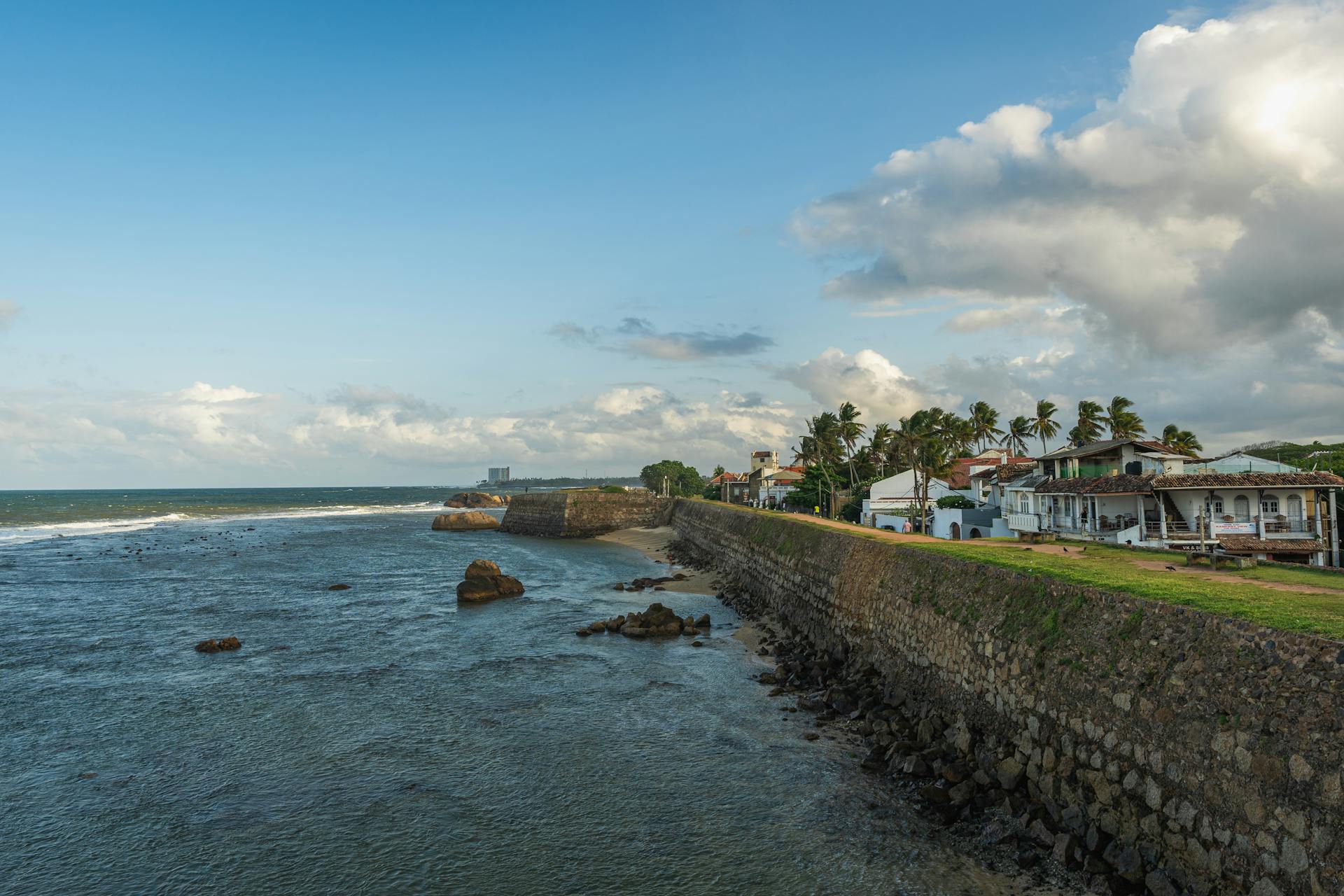
For dinner, Galle Fort has a variety of restaurants to choose from. You can head to Poonie's Kitchen, a hidden gem that serves healthy options with plenty of vegetarian dishes. We came here twice during our visit, and it's definitely a must-eat.
Church Street Social is another great option, located inside the Fort Bazaar hotel. This restaurant has a lovely atmosphere, with tiled floors and a solid menu. It's a good place to hang out for the afternoon, too.
If you have a sweet tooth, be sure to check out Isle of Gelato. This newly-opened shop serves world-class gelato, made with classic ingredients from Sri Lanka and training from Italy. It's so good that you'll want to come back for more.
For a backup option, Summer Green Chinese Restaurant is worth considering. We didn't get to try it out personally, but the space looked beautiful, and the menu looked good too.
Here are some of our favorite restaurants in Galle Fort:
- Poonie's Kitchen: Healthy options with tons of vegetarian dishes.
- Church Street Social: Lovely atmosphere and solid menu.
- Isle of Gelato: World-class gelato made with classic ingredients from Sri Lanka.
- Summer Green Chinese Restaurant: Beautiful space and good menu options.
Places to Visit
The Old Gate is a must-visit spot in Galle Fort, dating back to Portuguese times and featuring an emblem of the cock and a Dutch VOIC cres dated 1669.
You can easily walk through the Old Gate, but be aware that the nearby Zwart Black Bastion is a bit harder to access, requiring a visit to the Deputy Inspector General’s Office.
The Zwart Black Bastion is a historic structure built by the Portuguese in 1620, using coral rag and limestones, and originally supported eight big cannons facing the harbor.
If you can't access the bastion, you can still view it from a distance at the sandy fishing harbor north of the Old Gate, where you can also experience the daily busy fish market in the early morning.
The Old Gate also serves as the entrance to the National Maritime Museum, but be aware that it's not as impressive as the Maritime Archaeology Museum around the corner.
The Old Hospital
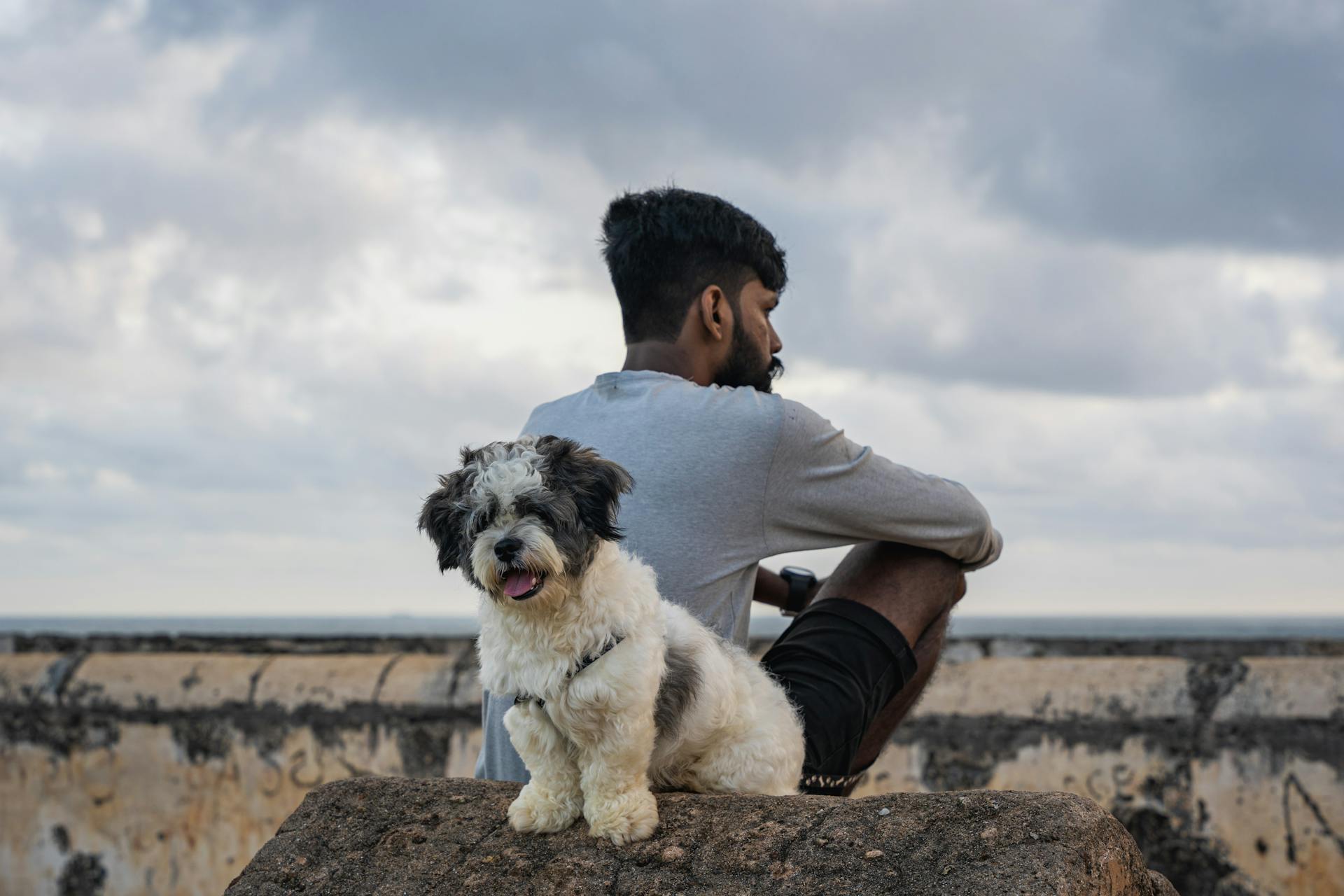
The Old Dutch Hospital is a must-visit destination in the area. It's a historic building that now houses a variety of restaurants, cafes, and shops.
You'll find several options for breakfast, lunch, and dinner, making it a great place to spend the day. The building's location offers stunning views of Galle Harbor and the Rumassala Peninsula.
One of the standout restaurants is A Minute by Tuk-Tuk, which has a great setting with terrace seating and a lovely view. They serve a range of dishes, including Chinese chili pot, prawn curry, and tandoori chicken burgers.
If you're looking for a more modern experience, head to Cannon Bar & Grill, which has a sleek interior and a balcony with a fantastic sea view. They serve a mix of Mexican, Indian, and Western dishes, including pizza and pasta.
Discover more: Naval Boat Building Yard (Sri Lanka)
Main Gate & Clock Tower
The main gate of this historic site is a stunning example of traditional architecture, with intricate carvings and ornate details.

It's a beautiful and iconic landmark that sets the tone for the rest of your visit.
The clock tower is an impressive structure that stands tall at the entrance, its chimes ringing out across the grounds.
This 19th-century clock tower is a masterpiece of engineering and design, and its intricate mechanisms are still functional today.
As you approach the main gate, you'll notice the beautifully manicured gardens and tranquil atmosphere that surround it.
The main gate is surrounded by a picturesque moat, adding to the sense of history and grandeur.
Law Court Square
Law Court Square is a public green space, but it's paved over, making it a unique spot to take a stroll. Large century-old Banyan trees provide shade, creating a pleasant atmosphere.
This square is surrounded by the Magistrate's Court to the west and the District Court to the east, making it a great place to observe the local court system in action. You can catch a glimpse of ongoing court cases on weekdays.

If you're visiting on the first Sunday of the month, be sure to check out the Galle Pola flea market, which takes place from 10:00 a.m. to 4:00 p.m. This is a great opportunity to explore local vendors and pick up some unique souvenirs.
The Law Court Square is open from 8:00 a.m. to 11:00 p.m., making it a great spot to visit at any time of day or night.
Commander's Residence and Belfry
As you wander through Galle, one of the first things you'll notice is the impressive Commander's Residence and Belfry, also known as the British Queen's House.
Built by the Dutch in 1683, this enormous mansion covers a whole block and was originally the residence of Thomas Van Rhee, the leader of the United East India Company officers.
The building has a rich history, having been used as the residence for Dutch governors who administered Galle, and later, by the British, who named it Queen's House after taking over in 1815.
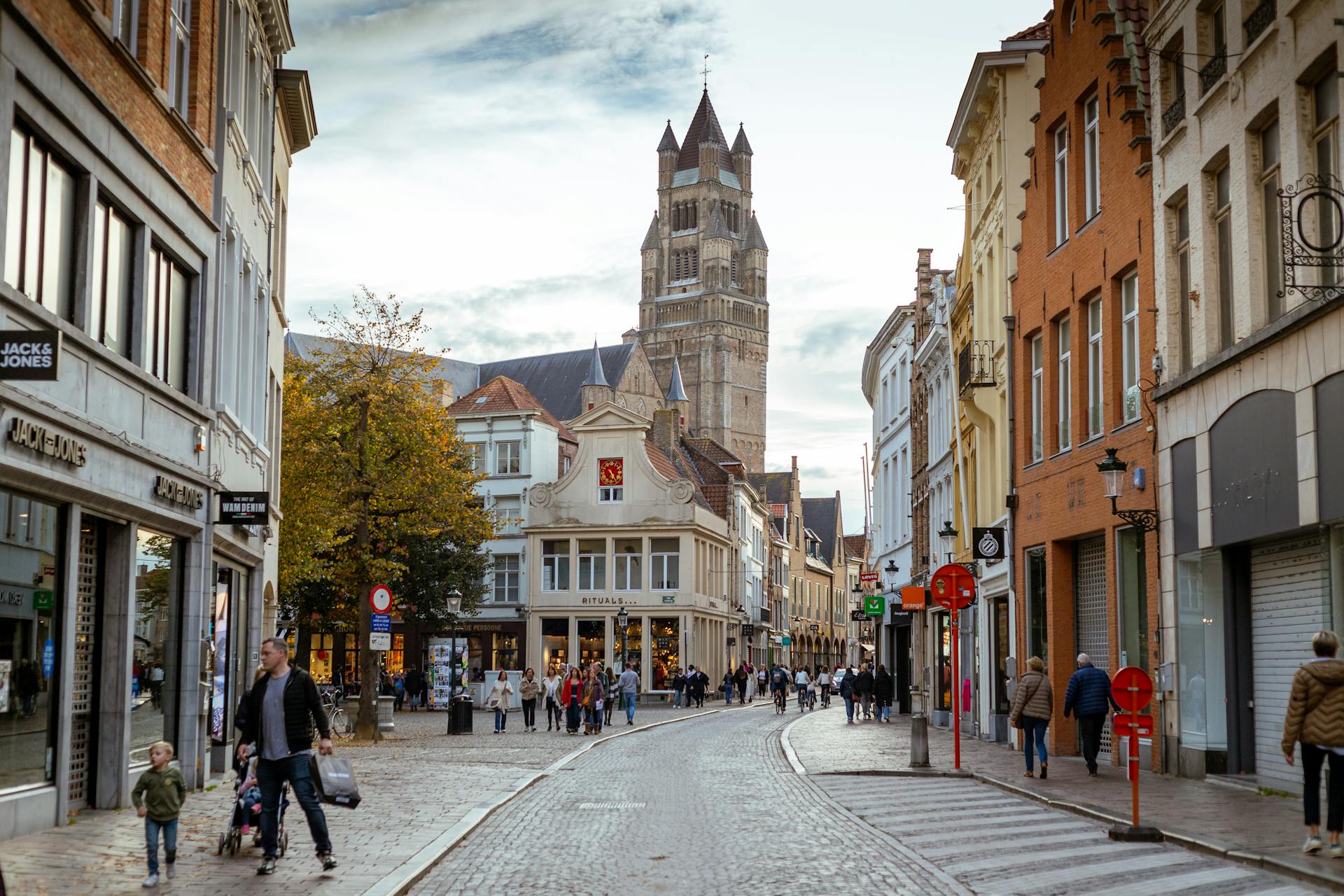
Sir Frederick Noth was the first British governor to move into the house in 1802, and the side of the house facing Leynbaan Cross Street was even used as a bank – the Oriental Bank, Galle's first bank.
The small belfry tower, built in 1701, still stands proudly, and its original bell still tolls every hour, timed by an ancient hourglass.
The Old Gate & Zwart Bastion
The Old Gate & Zwart Bastion is a must-visit spot in Galle Fort, with a rich history dating back to the Portuguese era.
The Old Gate is the original entrance to the fort, built during the Portuguese times, and features an emblem of the cock and a Dutch VOIC cres dated 1669 on the other wall.
You can easily walk through the Old Gate, and it's also the entrance to the National Maritime Museum, although we've found that it's not as impressive as the nearby Maritime Archaeology Museum.

The Zwart Bastion, also known as the Black Bastion, got its name from its sooty black color, resulting from standing above the Portuguese gun smithery, and was built using coral rag and limestones in 1620.
To access the Zwart Bastion, you'll need to walk inside the fence of the Deputy Inspector General's Office, but don't worry, the friendly employees there will show you around for a small donation.
Alternatively, you can view the Black Bastion from a distance at the sandy fishing harbor north of the Old Gate, or watch the daily busy fish market in the early morning hours.
G. Western Ramparts
The Western Ramparts of Galle Fort are a must-visit destination for anyone exploring the area. This section of the fort offers breathtaking views of the Indian Ocean and is a great spot to watch the sunset.
Locals often gather here to play informal cricket with friends and family, adding to the lively atmosphere. You can also explore the remnants of the four bastions that once stood on top of the Western wall.
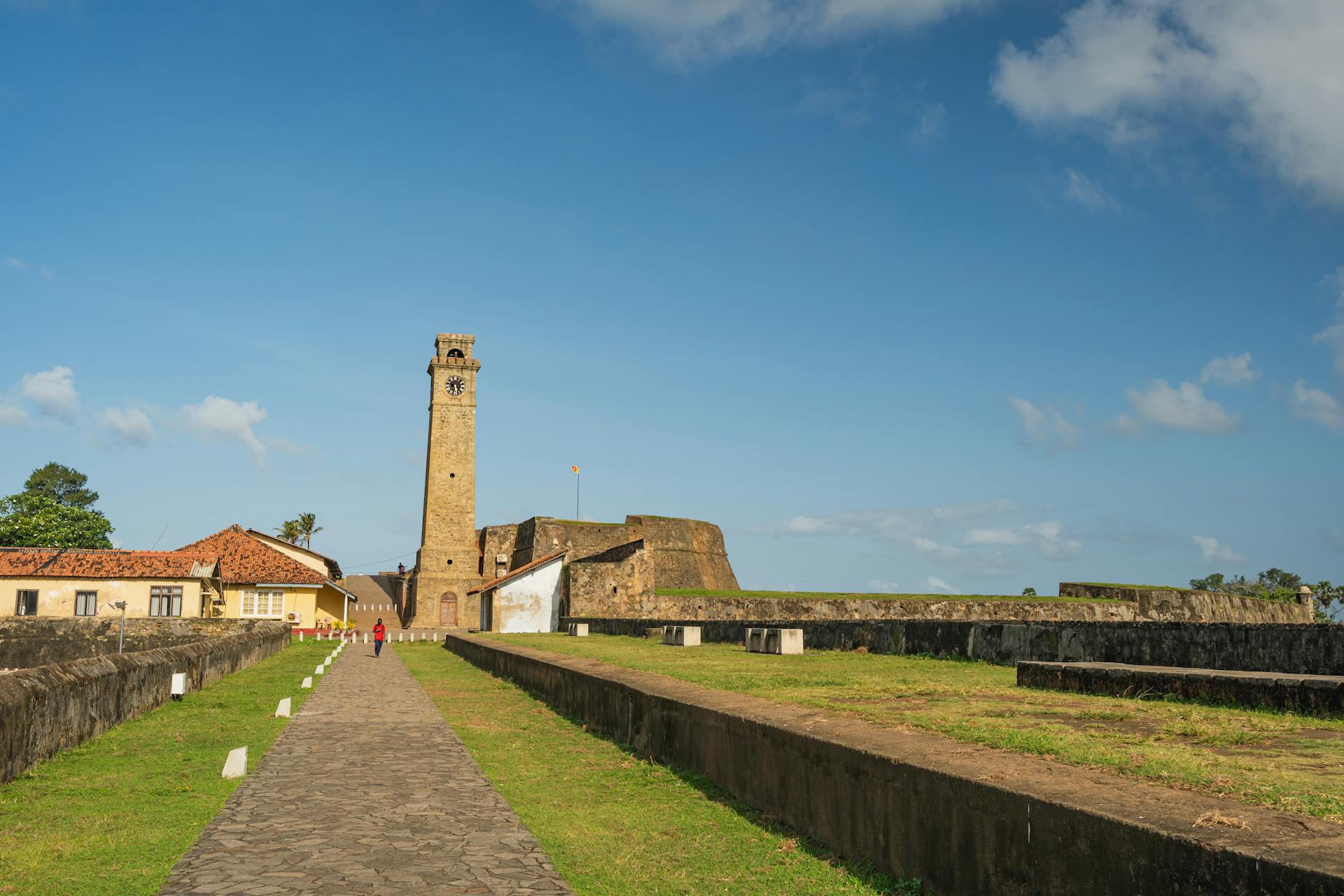
Triton Bastion, one of the bastions, was once home to a windmill that drew water from the sea to sprinkle the dusty roads of Galle. The Dutch built Neptune Bastion in the 17th century, which was used to defend the city from attacks from the sea.
The bastions on the Western Ramparts have a rich history, with Triton Bastion having a windmill and Neptune Bastion having cannons mounted on it. The signal station at Neptune Bastion was a circular building with a flag that signaled to collaborating businesses about joint shipping operations.
You can walk north along the western wall until you reach the Star Bastion, which is a part of the Northern Ramparts. The ramparts are a great place to start your exploration of Galle Fort, offering unbeatable views of the Indian Ocean.
Here are the four bastions that once stood on top of the Western wall:
- Triton Bastion
- Neptune Bastion
- Aeolus Bastion
- Star Bastion (a part of the Northern Ramparts)
The Western Ramparts are a great place to experience the laid-back coastal vibe of Galle, with locals playing cricket and the sound of the waves crashing below.
UNESCO World Heritage Site
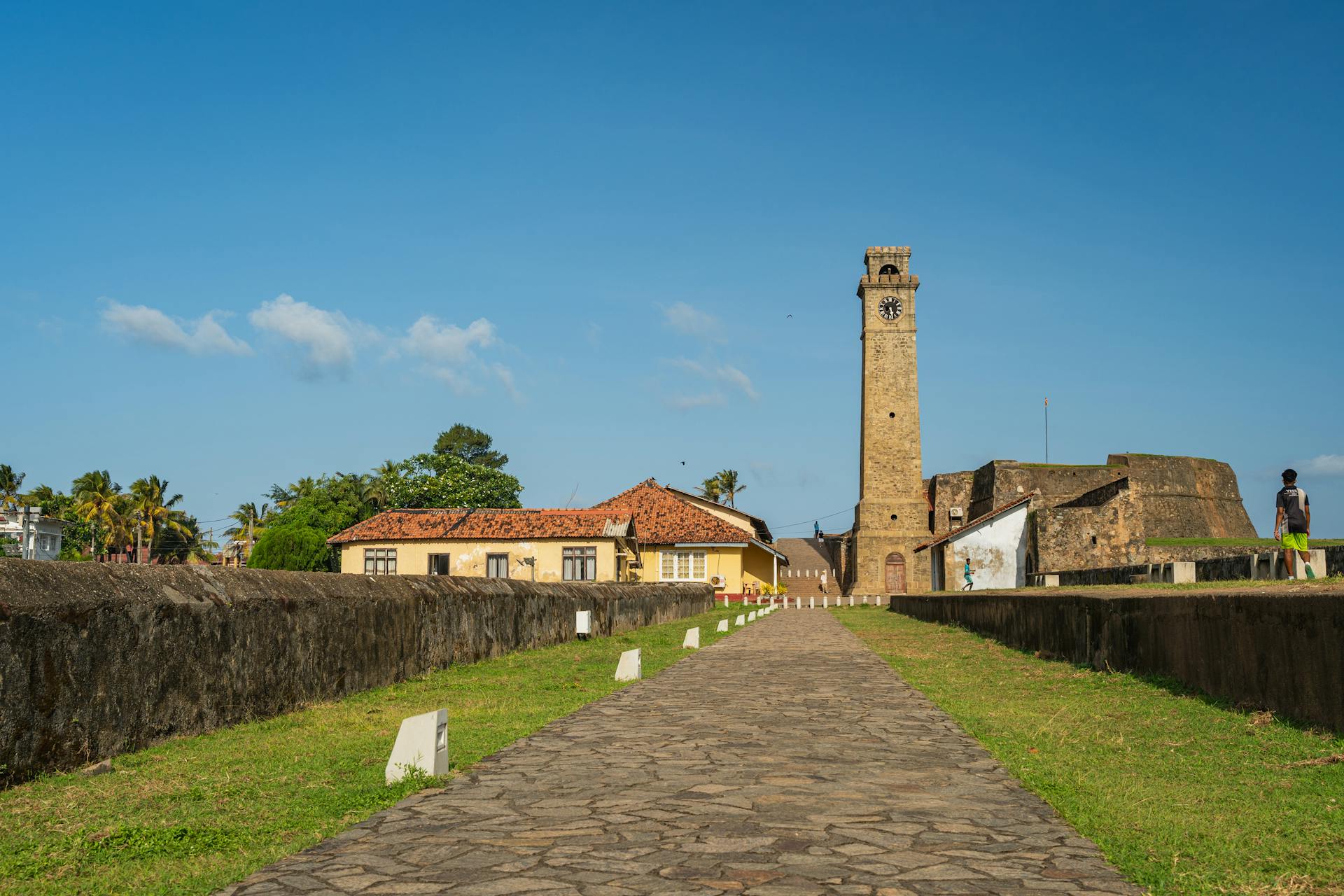
Galle Fort is a UNESCO World Heritage Site, recognized for its unique heritage value since 1988. The Old Town of Galle is an excellent example of a fortified city built by Europeans in South and South-East Asia, showcasing the blend of European architectural styles and South Asian traditions.
Sri Lanka is home to 8 UNESCO World Heritage Sites, a testament to its rich cultural and historical significance. The country's unique blend of traditions and architectural styles has made it a treasure trove for history enthusiasts and cultural tourists alike.
The UNESCO World Heritage Convention has recognized the following sites in Sri Lanka:
- Ancient City of Polonnaruwa
- Ancient City of Sigiriya
- Central Highlands of Sri Lanka
- Old Town of Galle and its Fortifications
- Rangiri Dambulla Cave Temple
- Sacred City of Anuradhapura
- Sacred City of Kandy
- Sinharaja Forest Reserve
Tips and Planning
To make the most of your visit to Galle Dutch Fort in Sri Lanka, consider the following tips and planning essentials.
The best time to visit Galle Fort is from November to April, avoiding the monsoon season. This allows you to explore comfortably in the tropical climate.

Dress comfortably by wearing light clothing and don't forget comfortable shoes, as you'll be walking on cobblestone streets and exploring various nooks.
Stay hydrated by carrying a water bottle, especially during the intense coastal heat. Many cafes and restaurants within the Fort offer refreshing drinks and snacks if you need a break.
For photographers, Galle Fort offers stunning light at dawn and dusk. The soft morning light adds a warm glow to the architecture, while the sunsets along the ramparts are unforgettable.
Here are some essential things to remember when visiting Galle Fort:
- Time your visit from November to April to avoid the monsoon season.
- Dress light and wear comfortable shoes.
- Carry a water bottle to stay hydrated.
- Respect the heritage sites and preservation rules.
- Check out local events and festivals for a unique experience.
History of Galle
Galle has a rich history that dates back to the 17th century.
The Dutch East India Company built the current Galle Fort in 1663 as a means to defend against the Portuguese.
This impressive fort was fortified on a large scale during the 17th century, with a solid granite wall and three bastions named Sun, Moon, and Star.
The fort fell into the hands of the British in 1796, but they preserved it as is, showing respect for its historical significance.
Now the fort serves as the administrative center of Galle district, a testament to its enduring importance.
Tsunami and Renovation
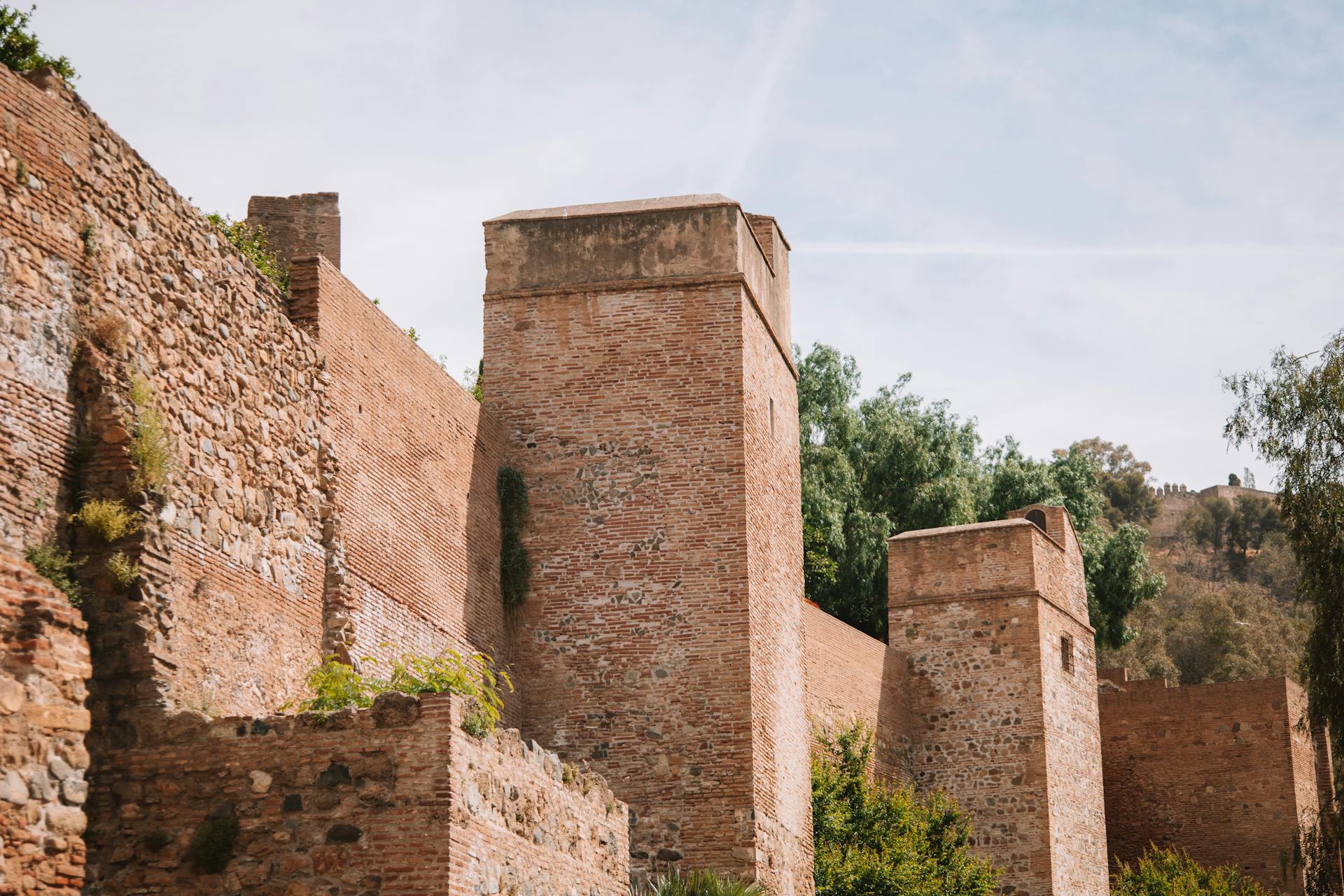
Galle was heavily damaged by the Tsunami of 2004, but it's amazing to see how it's been restored to its former glory. The Ministry of Cultural Affairs in Sri Lanka launched a massive renovation and reconstruction project to restore some of the old heritage buildings, like the All Saint's Church and the lighthouse.
The project was financially supported by the Governments of Sri Lanka and the Netherlands. Many of the old townhouses have been bought by expats and rich Sri Lankans and Indians and renovated into beautiful holiday homes, restaurants, cafes, and boutique hotels.
The Old Dutch Hospital building was renovated and restored in 2014 as a dining and shopping complex. This is a great example of how Galle's old buildings can be transformed into modern spaces while still maintaining their historic charm.
Galle Travel Tips
Galle Fort is a charming destination, but it's essential to plan ahead to make the most of your visit. The best time to visit Galle Fort is from November to April, avoiding the monsoon season.
The tropical climate in Galle can be intense, so it's crucial to dress comfortably. Wear light clothing and don't forget comfortable shoes, as you'll be walking on cobblestone streets and exploring various nooks.
Staying hydrated is also a must, especially in the midday sun. Carry a water bottle and take breaks at cafes and restaurants within the Fort to refresh yourself.
As a photographer, you'll love the stunning light at dawn and dusk in Galle Fort. The soft morning light adds a warm glow to the architecture, while the sunsets along the ramparts are unforgettable.
To ensure the preservation of Galle Fort's heritage sites, it's essential to respect its rules. Avoid littering and be mindful when visiting religious sites, such as the church, where modest clothing is appreciated.
Here are some additional tips to keep in mind when visiting Galle Fort:
- Arrive early to beat the crowds and enjoy a quieter, cooler morning.
- Wear comfortable shoes to explore the cobblestone streets and fort walls.
- Stay hydrated and sun-safe with a reusable water bottle, sunscreen, and a hat or cap.
- Consider taking a guided tour for hidden insights and fascinating stories about the fort's colonial past.
- Support local businesses by visiting small cafés, boutiques, and craft stores inside the fort.
Where to Shop
Galle Fort is a shopper's paradise, with many lovely shops to explore. Most shops in Galle Fort are open until 7 pm or 8 pm, making it easy to fit in some shopping after a day of exploring.
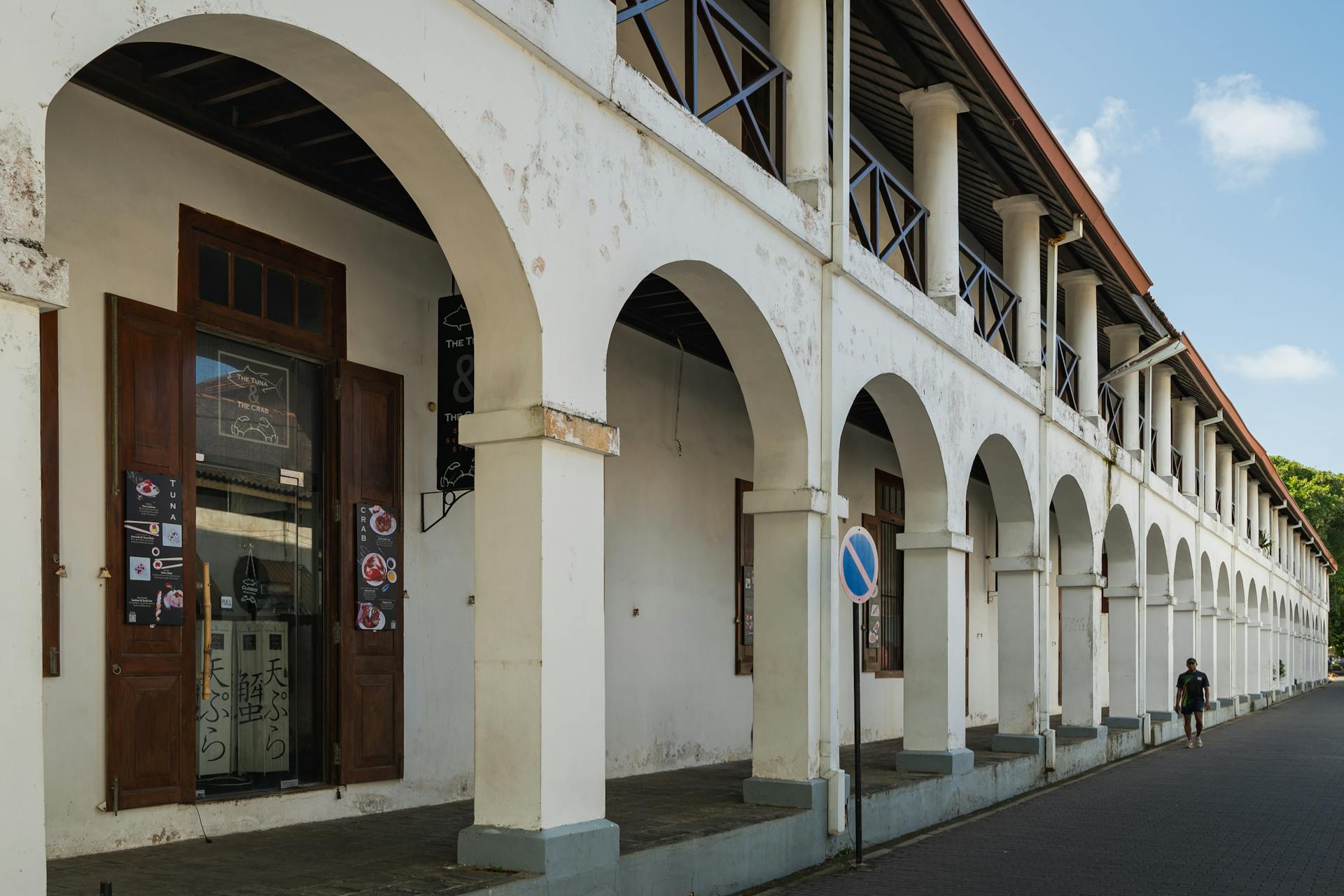
You can find a variety of unique gifts and souvenirs to bring back home. Some shops are closed on Sundays, so be sure to plan your shopping trip accordingly.
Stick No Bills is a must-visit shop for anyone who loves old travel posters. They sell cool, old travel posters from Sri Lankan airline companies and the Sri Lanka Tourism Board.
Frequently Asked Questions
Why is Galle Fort famous?
Galle Fort is famous for being a unique monument complex that showcases a blend of European and South Asian architectural styles. It's considered one of the best examples of a fortified city built by Europeans in South Asia.
Is Galle Fort worth visiting?
Yes, Galle Fort is a unique blend of history, scenery, and hospitality, making it a must-visit destination in Sri Lanka. Explore its colonial past, stunning views, and welcoming atmosphere.
Sources
- https://www.travellocal.com/en/articles/galle-and-the-dutch-legacy-in-sri-lanka
- https://www.travellankaconnection.com/destinations/galle-fort/
- https://www.bontraveler.com/the-first-timers-guide-to-galle-fort-sri-lanka/
- https://nerdnomads.com/galle
- https://fernandotravels.com.au/blogs/exploring-galle-dutch-fort-history-beauty-and-travel-tips
Featured Images: pexels.com
